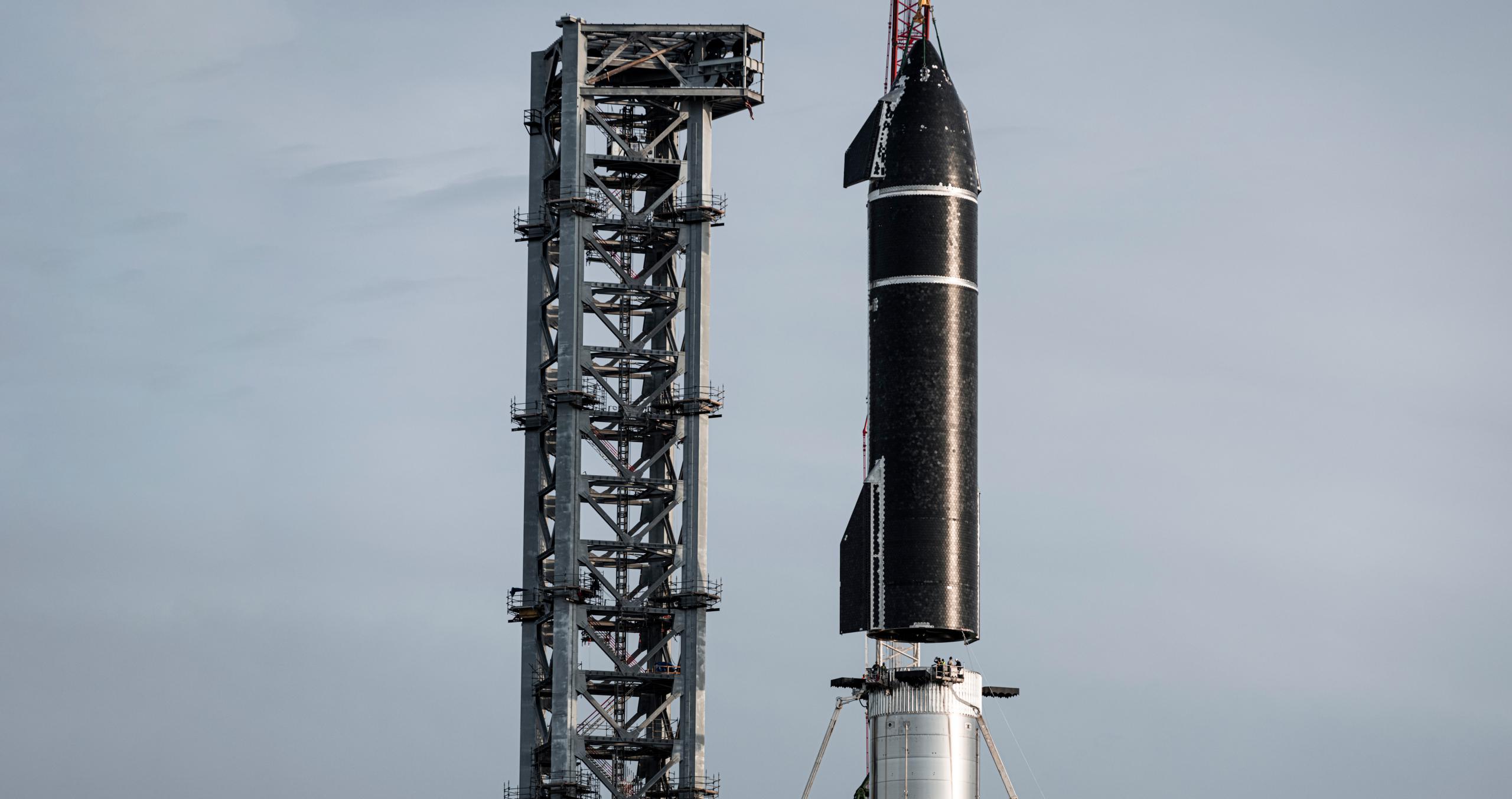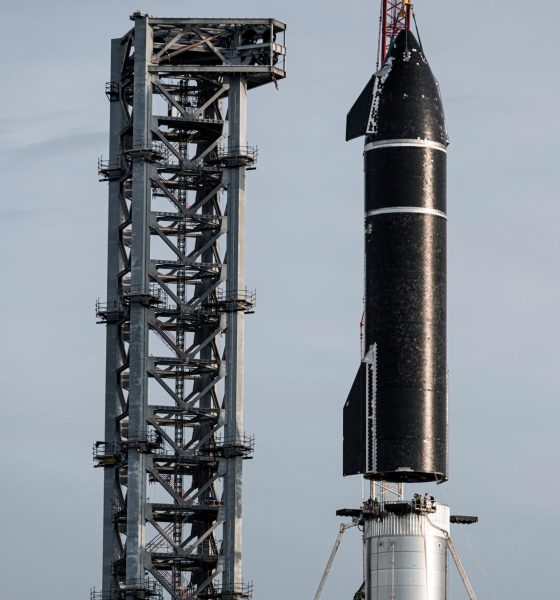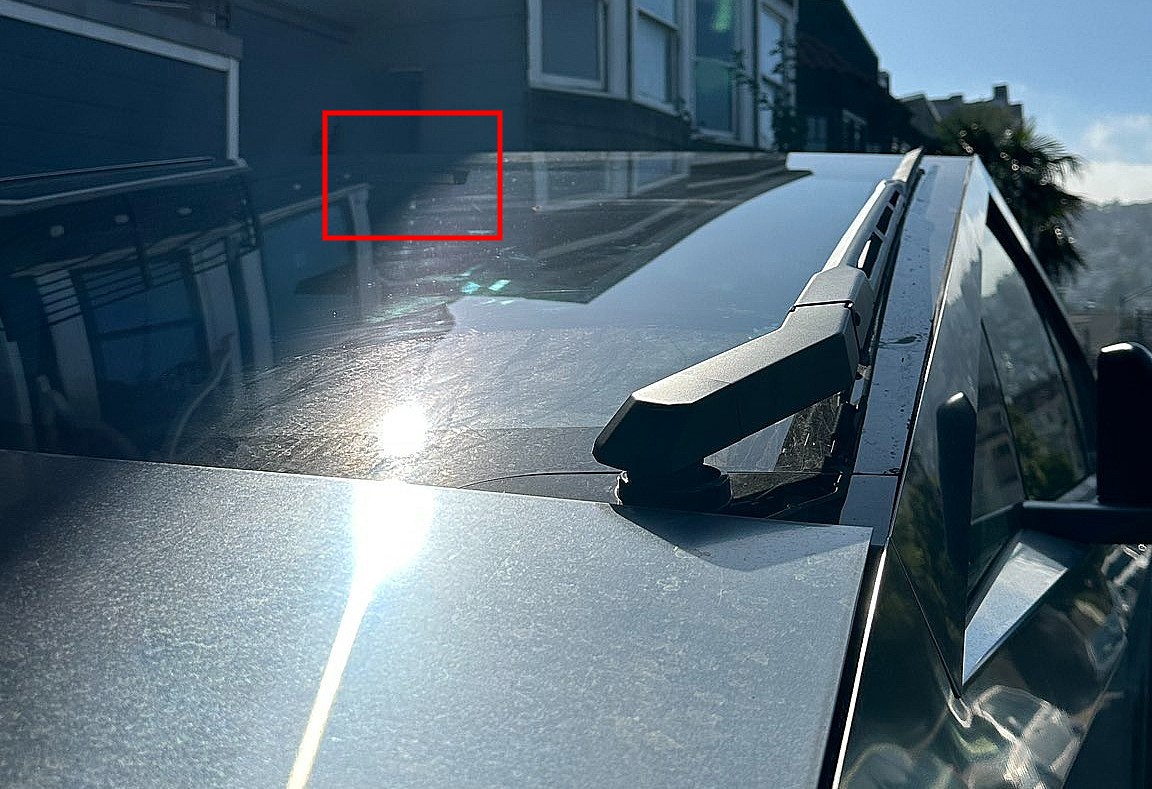

News
SpaceX Starship briefly becomes largest rocket in history – now what’s next?
On August 6th, after a great deal of anticipation, SpaceX stacked a Starship on top of a Super Heavy booster for the first time ever, very briefly assembling the largest rocket in history.
However, barely an hour after the two stages were integrated and (presumably) latched together, SpaceX lifted Starship (S20) off the booster, returned it to its transport stand, and rolled the ship back to the build site later that day. Though an extreme sensitivity to wind conditions has delayed the procedure, Super Heavy Booster 4 (B4) also appears to be on track to be removed from the orbital launch mount and sent either back to the factory or to a suborbital launch mount that’s been modified for booster testing.
For those that followed the process closely in the days and weeks prior, the fact that Starship’s first full assembly was just a fit check (and, really, more like 50:50 between fit check and photo op) came as no surprise. In the lead-up, it became clear through several reports that CEO Elon Musk had challenged SpaceX to stack Ship 20 and Booster 4 by August 5th and flown in several hundred employees normally stationed elsewhere to accomplish the feat.
Ignoring weather delays that prevented stacking on August 5th, SpaceX met Musk’s challenge in all but the literal sense, assembling the world’s largest rocket into one integrated stack for the first time ever. Even more significantly, despite the fact that SpaceX could have easily decided to stack two not-for-flight prototypes to sort of achieve the same feat, both stages – Ship 20 and Booster 4 – involved in the August 6th milestone are nominally destined for flight.
Barring surprises, the same exact pair is scheduled to support Starship’s first orbital test flight as early as this year. Before they can be cleared for flight, however, a great deal of work must still be completed – work that in some cases is unprecedented in the history of the Starship program.
Not long after the stacking milestone, Musk himself sketched out a few of the tasks still in front of the rocket. Namely, Musk says that SpaceX must still complete Starship S20’s partially-finished heat shield, install some form of heat shield(s) to protect Super Heavy Booster 4’s 29 naked Raptor engines; finish installing, plumbing, and activating 4-7 massive custom propellant storage tanks; and assemble, install, and activate a giant mechanical umbilical arm on the launch tower to fuel and power Starship.
All are undoubtedly crucial and Starship is unlikely to launch before any of them are more or less complete. However, the booster and ship themselves are arguably far more of a pressure point. Before they can be deemed ready for flight, both the ship and booster must complete unprecedented test campaigns on the ground.
Ship 20 will need to complete cryogenic proof testing to verify that the first Starship with six Raptor engine mounts is structurally sound. SpaceX has already modified one of its two suborbital Starship launch mounts for that purpose. Once cryo proof and hydraulic ram testing is complete, those six rams will likely be removed and six Raptor engines will be installed in their place, potentially setting up Ship 20 to become the first Starship prototype to static fire six engines – and any number of Raptor Vacuum engines.
Super Heavy Booster 4 will be faced with an even more ambitious static fire test campaign as SpaceX likely gradually installs more and more engines. Depending on how focused SpaceX is on speed over thoroughness, that process could involve gradually adding 2-5 engines after every static fire or could result in SpaceX starting with 4-9 engines and then immediately jumping from 9 to a full 29-Raptor static fire.
Only after completing those crucial qualification tests is SpaceX likely to stack Ship 20 and Booster 4 for a second time and enter the first true full-stack Starship launch flow – hopefully culminating in the first orbital launch attempt later this year, but only as soon as the FAA completes an environmental review and approves the rocket’s launch license. Technically, FAA approval could come next month or it could take the agency a year or more – it’s almost impossible to predict without official information. However, given SpaceX’s track record with Starship prototypes and Booster B3, it’s likely that a flightworthy Starship and Super Heavy will be stacked on the pad and ready to launch just a few months from now.
Stay tuned for updates on that potential standoff in the making and Starship’s progress towards its first orbital test flight.

News
Tesla aims to combat common Full Self-Driving problem with new patent
Tesla writes in the patent that its autonomous and semi-autonomous vehicles are heavily reliant on camera systems to navigate and interact with their environment.

Tesla is aiming to combat a common Full Self-Driving problem with a new patent.
One issue with Tesla’s vision-based approach is that sunlight glare can become a troublesome element of everyday travel. Full Self-Driving is certainly an amazing technology, but there are still things Tesla is aiming to figure out with its development.
Unfortunately, it is extremely difficult to get around this issue, and even humans need ways to combat it when they’re driving, as we commonly use sunglasses or sun visors to give us better visibility.
Cameras obviously do not have these ways to fight sunglare, but a new patent Tesla recently had published aims to fight this through a “glare shield.”
Tesla writes in the patent that its autonomous and semi-autonomous vehicles are heavily reliant on camera systems to navigate and interact with their environment.

The ability to see surroundings is crucial for accurate performance, and glare is one element of interference that has yet to be confronted.
Tesla described the patent, which will utilize “a textured surface composed of an array of micro-cones, or cone-shaped formations, which serve to scatter incident light in various directions, thereby reducing glare and improving camera vision.”

The patent was first spotted by Not a Tesla App.
The design of the micro-cones is the first element of the puzzle to fight the excess glare. The patent says they are “optimized in size, angle, and orientation to minimize Total Hemispherical Reflectance (THR) and reflection penalty, enhancing the camera’s ability to accurately interpret visual data.”
Additionally, there is an electromechanical system for dynamic orientation adjustment, which will allow the micro-cones to move based on the angle of external light sources.
This is not the only thing Tesla is mulling to resolve issues with sunlight glare, as it has also worked on two other ways to combat the problem. One thing the company has discussed is a direct photon count.
CEO Elon Musk said during the Q2 Earnings Call:
“We use an approach which is direct photon count. When you see a processed image, so the image that goes from the sort of photon counter — the silicon photon counter — that then goes through a digital signal processor or image signal processor, that’s normally what happens. And then the image that you see looks all washed out, because if you point the camera at the sun, the post-processing of the photon counting washes things out.”
Future Hardware iterations, like Hardware 5 and Hardware 6, could also integrate better solutions for the sunglare issue, such as neutral density filters or heated lenses, aiming to solve glare more effectively.
Elon Musk
Delaware Supreme Court reinstates Elon Musk’s 2018 Tesla CEO pay package
The unanimous decision criticized the prior total rescission as “improper and inequitable,” arguing that it left Musk uncompensated for six years of transformative leadership at Tesla.

The Delaware Supreme Court has overturned a lower court ruling, reinstating Elon Musk’s 2018 compensation package originally valued at $56 billion but now worth approximately $139 billion due to Tesla’s soaring stock price.
The unanimous decision criticized the prior total rescission as “improper and inequitable,” arguing that it left Musk uncompensated for six years of transformative leadership at Tesla. Musk quickly celebrated the outcome on X, stating that he felt “vindicated.” He also shared his gratitude to TSLA shareholders.
Delaware Supreme Court makes a decision
In a 49-page ruling Friday, the Delaware Supreme Court reversed Chancellor Kathaleen McCormick’s 2024 decision that voided the 2018 package over alleged board conflicts and inadequate shareholder disclosures. The high court acknowledged varying views on liability but agreed rescission was excessive, stating it “leaves Musk uncompensated for his time and efforts over a period of six years.”
The 2018 plan granted Musk options on about 304 million shares upon hitting aggressive milestones, all of which were achieved ahead of time. Shareholders overwhelmingly approved it initially in 2018 and ratified it once again in 2024 after the Delaware lower court struck it down. The case against Musk’s 2018 pay package was filed by plaintiff Richard Tornetta, who held just nine shares when the compensation plan was approved.
A hard-fought victory
As noted in a Reuters report, Tesla’s win avoids a potential $26 billion earnings hit from replacing the award at current prices. Tesla, now Texas-incorporated, had hedged with interim plans, including a November 2025 shareholder-approved package potentially worth $878 billion tied to Robotaxi and Optimus goals and other extremely aggressive operational milestones.
The saga surrounding Elon Musk’s 2018 pay package ultimately damaged Delaware’s corporate appeal, prompting a number of high-profile firms, such as Dropbox, Roblox, Trade Desk, and Coinbase, to follow Tesla’s exodus out of the state. What added more fuel to the issue was the fact that Tornetta’s legal team, following the lower court’s 2024 decision, demanded a fee request of more than $5.1 billion worth of TSLA stock, which was equal to an hourly rate of over $200,000.
Delaware Supreme Court Elon Musk 2018 Pay Package by Simon Alvarez
News
Tesla Cybercab tests are going on overdrive with production-ready units
Tesla is ramping its real-world tests of the Cybercab, with multiple sightings of the vehicle being reported across social media this week.

Tesla is ramping its real-world tests of the Cybercab, with multiple sightings of the autonomous two-seater being reported across social media this week. Based on videos of the vehicle that have been shared online, it appears that Cybercab tests are underway across multiple states.
Recent Cybercab sightings
Reports of Cybercab tests have ramped this week, with a vehicle that looked like a production-ready prototype being spotted at Apple’s Visitor Center in California. The vehicle in this sighting was interesting as it was equipped with a steering wheel. The vehicle also featured some changes to the design of its brake lights.
The Cybercab was also filmed testing at the Fremont factory’s test track, which also seemed to involve a vehicle that looked production-ready. This also seemed to be the case for a Cybercab that was spotted in Austin, Texas, which happened to be undergoing real-world tests. Overall, these sightings suggest that Cybercab testing is fully underway, and the vehicle is really moving towards production.
Production design all but finalized?
Recently, a near-production-ready Cybercab was showcased at Tesla’s Santana Row showroom in San Jose. The vehicle was equipped with frameless windows, dual windshield wipers, powered butterfly door struts, an extended front splitter, an updated lightbar, new wheel covers, and a license plate bracket. Interior updates include redesigned dash/door panels, refined seats with center cupholders, updated carpet, and what appeared to be improved legroom.
There seems to be a pretty good chance that the Cybercab’s design has been all but finalized, at least considering Elon Musk’s comments at the 2025 Annual Shareholder Meeting. During the event, Musk confirmed that the vehicle will enter production around April 2026, and its production targets will be quite ambitious.








